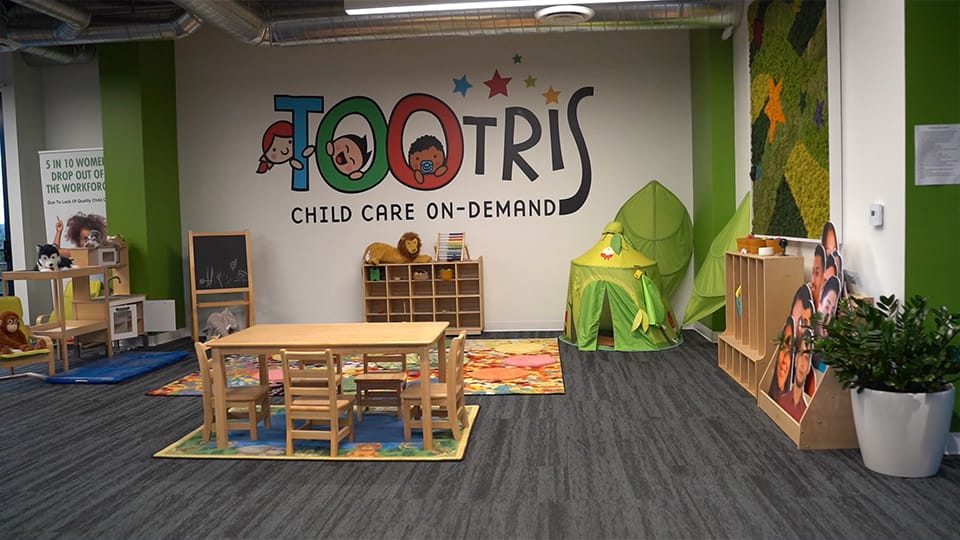New initiative targets child care access for Wayne County workers
Subscriber Benefit
As a subscriber you can listen to articles at work, in the car, or while you work out. Subscribe Now
The Economic Development Corp. of Wayne County is leading an initiative designed to help employers connect current and future employees with access to child care.
The organization is partnering with California-based Tootris, which has developed a platform designed to help parents easily find child care providers in their area.
Seven Wayne County companies have signed on to the Child Care Benefit Initiative, which will initially provide financial support for the first 1,700 full-time employees who wish to take advantage of the platform.
EDC of Wayne County President Valerie Shaffer told Inside INdiana Business the initiative is part of an effort to address a growing challenge.
“Part of our job is to help mitigate challenges within the community, and that’s primarily by supporting our employers but also finding ways in which we can enhance our workforce participation rate,” Shaffer said. “And so we really felt like leading this initiative and taking it from the approach as the convener, we could engage more employers quickly and work together to try to solve this issue.”
Tootris works with employers to create a child care employee benefit for working parents. The Wayne County initiative is being financially supported by the EDC and the Duke Energy Foundation.
The participating employers are Hill’s Pet Nutrition, Berry Global, Earlham College, Primex Plastics, Primex Design & Fabrication, Northeastern Wayne School Corp., and Dot Foods.
Shaffer said the Tootris platform provides benefits for both the employers and their workers.
“This platform will allow workers for our participating companies that are using this platform to search, to vet, and to enroll in child care all online,” she said. “This platform will manage payroll withholdings to pay providers directly, and as employers decide to provide child care subsidies as a benefit to their workforce, this platform can also manage that on behalf of the employers as well.”
Jeff McAdam, communications director for Tootris, said the pandemic caused more than 16,000 child care locations to close permanently, and more are on the brink of closure due to federal funding from the American Rescue Plan Act coming to an end.
McAdam said employers creating their own child care benefit programs also create benefits for the child care providers as well.
“You’re helping the child care providers by filling their enrollments and Tootris actually helps create child care programs too,” he said. “So, it just it’s like it’s a cycle that kind of replenishes itself, and it’s a win-win-win all the way around.”
Shaffer said more employers are already coming on board the initiative, though they are not being named publicly. She said the EDC’s hope is to have as many employers involved and a high percentage of the workforce having access to the platform.
“Also, our hope is through this additional employer engagement in the child care crisis, that employers will start offering childcare subsidies,” she said. “In the survey that we conducted of our workforce, child care subsidies was the No. 2 most requested benefit and so, it is highly sought out and needed for families to remain in the workforce.”
Shaffer said more discussions are taking place this week with Tootris to potentially bring the company on in a consulting role to help child care providers increase the number of seats they can offer.
She said it’s important to note that while the EDC may be leading this specific initiative, it will take a collaborative effort to fully address the child care challenge.
“There’s no one entity that’s tasked with solving this issue. We all have to work together,” she said. “And so the EDC is able to be that convener and work with our employers, work with governmental entities, work through the IEDA child care working group to try to share best practices and and brainstorm with one another to determine how potentially even we can get help at the state level through the legislature upcoming legislative session. So there’s a lot that needs to be done.”
